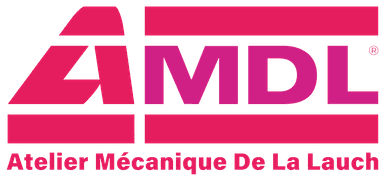Guide bushes
In press tooling, guide bushes play a crucial role in ensuring precise and stable positioning of movable components. Paired with a guide pillar and possibly a ball cage, they are used to guide the linear movements of elements within the tool, minimizing friction, vibrations, and excessive wear. Various types of guide bushes are available, each with its own characteristics and advantages depending on the guiding system and the application. To choose the right guide bush you need to take into account several parameters such as : loads, movement speed, precision, and other application-specific parameters. Each type of bush has its own advantages and limitations.
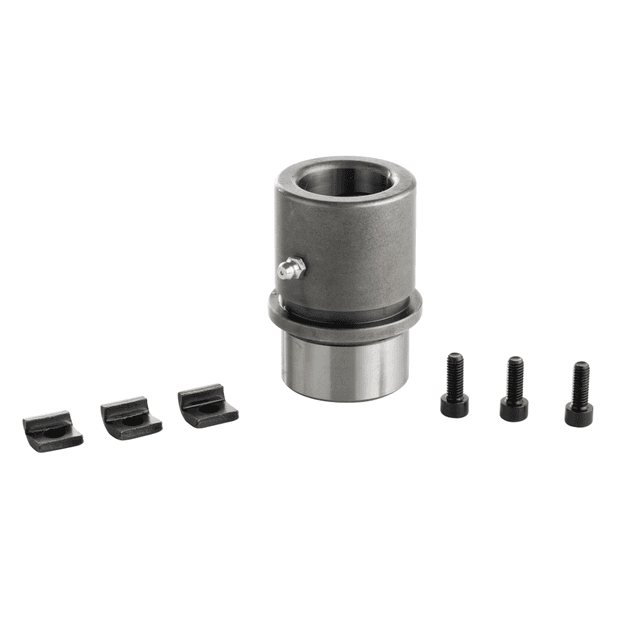
Demountable steel guide bushes B10 - ISO 9448
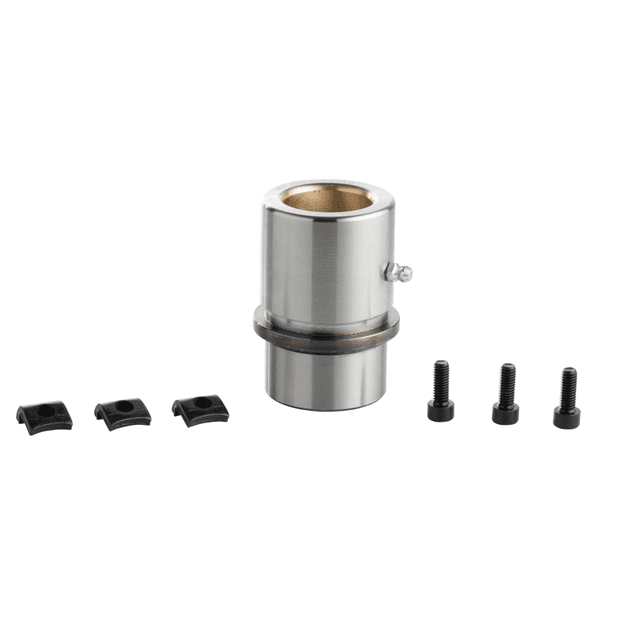
Demountable bronze plated guide bushes B20 - ISO 9448
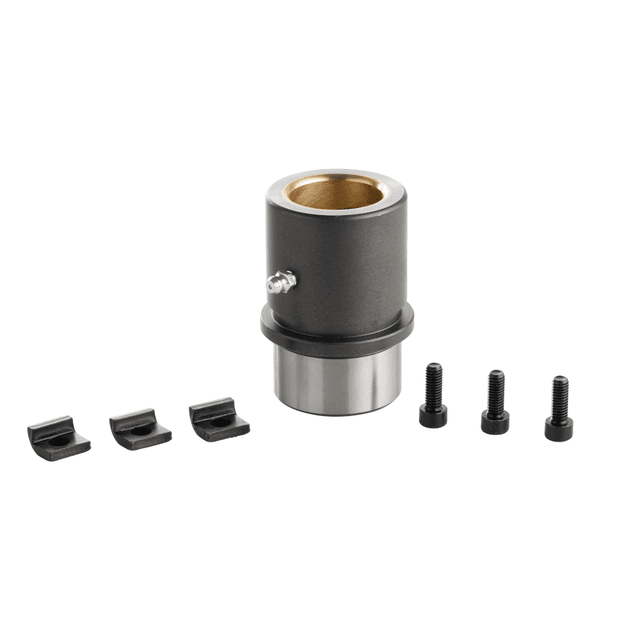
Demountable bronze inserted guide bushes B20I - ISO 9448
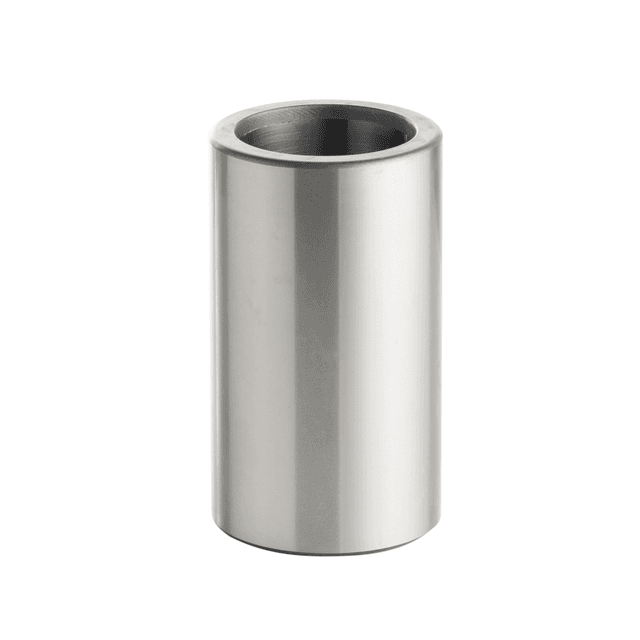
Straight sleeve ball bearing bushes B30 - ISO 9448
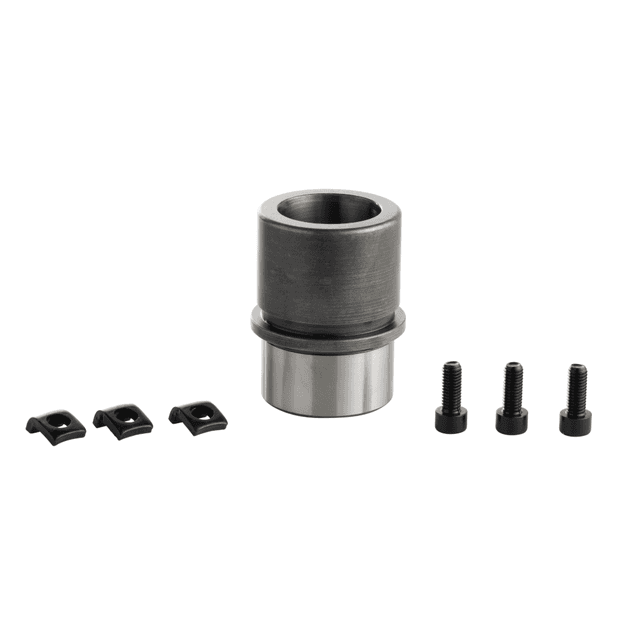
Demountable ball bearing bushes B40 - ISO 9448
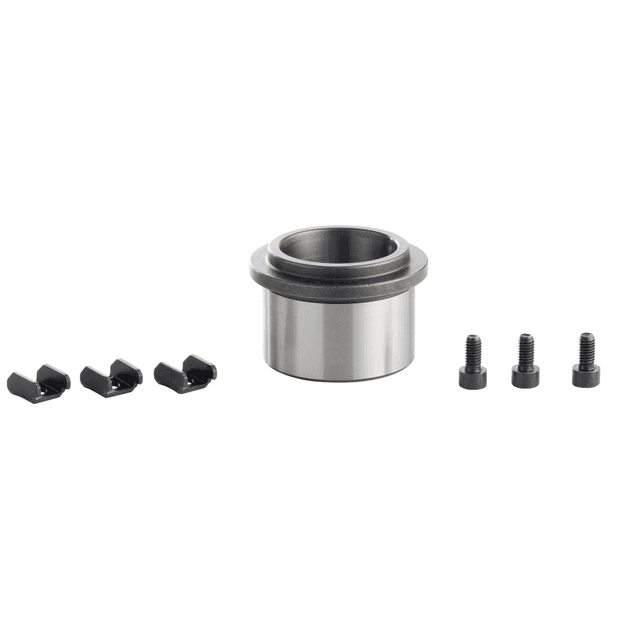
Stripper plate demountable ball bearing bushes B42 - ISO 9448
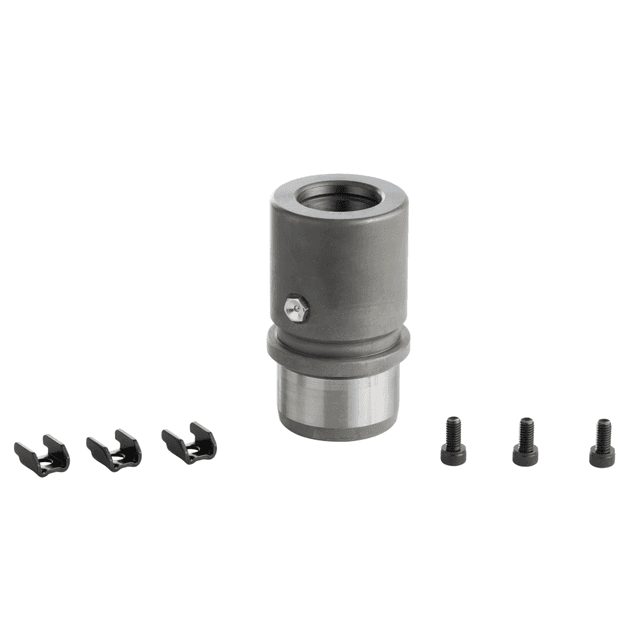
Demountable steel guide bushes DB11 - DIN 9831
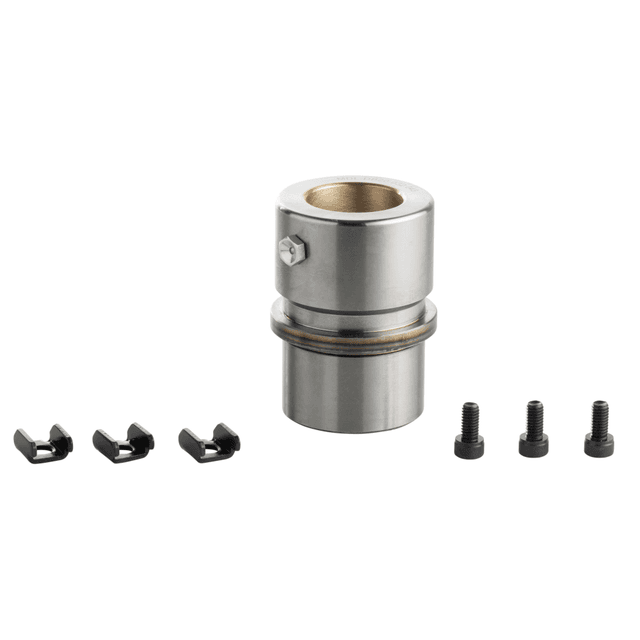
Demountable bronze plated guide bushes DB21 - DIN 9831
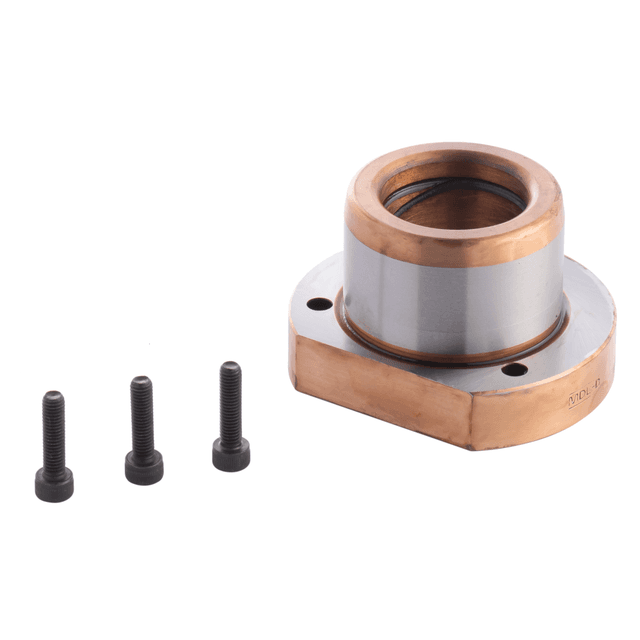
Demountable bronze flanged guide bushes DB31 - DIN 9831
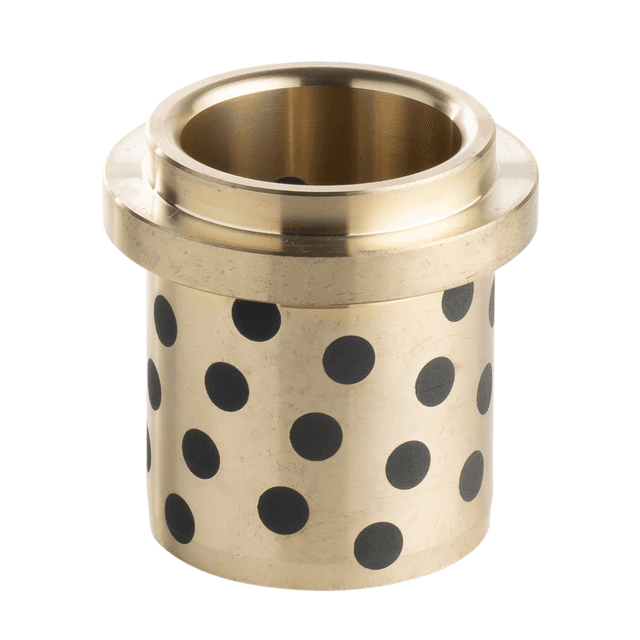
Bronze demountable guide bushes with graphit inserts DBEI - DIN 9834
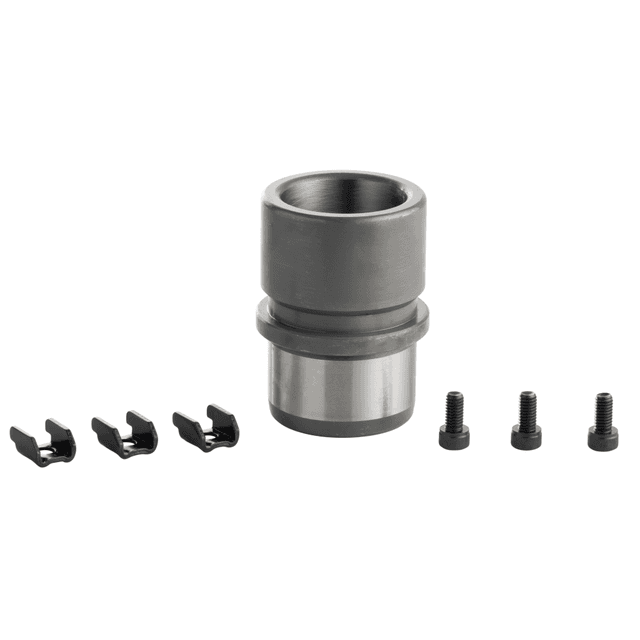
Demountable ball bearing bushes DB41 - DIN 9831
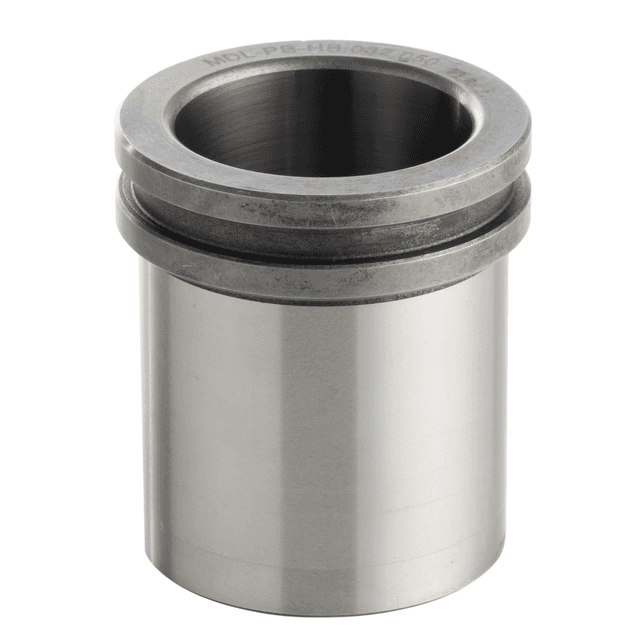
Demountable steel guide bushes HB - NF E63-123
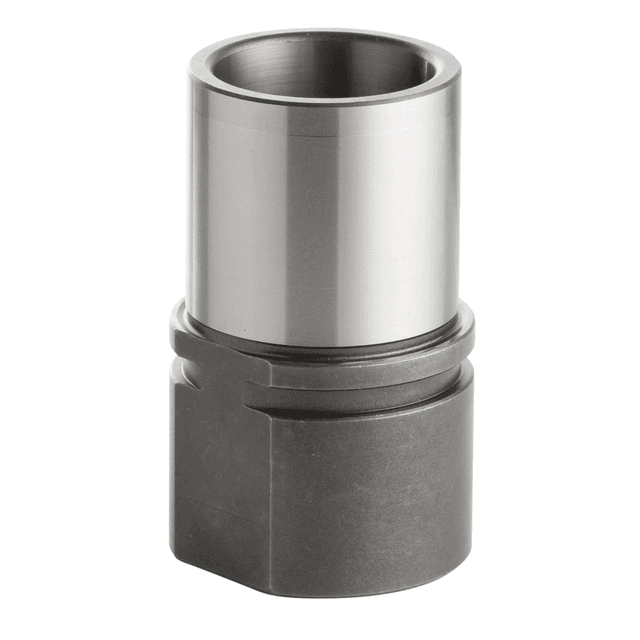
Demountable steel guide bushes JB - NF E63-123
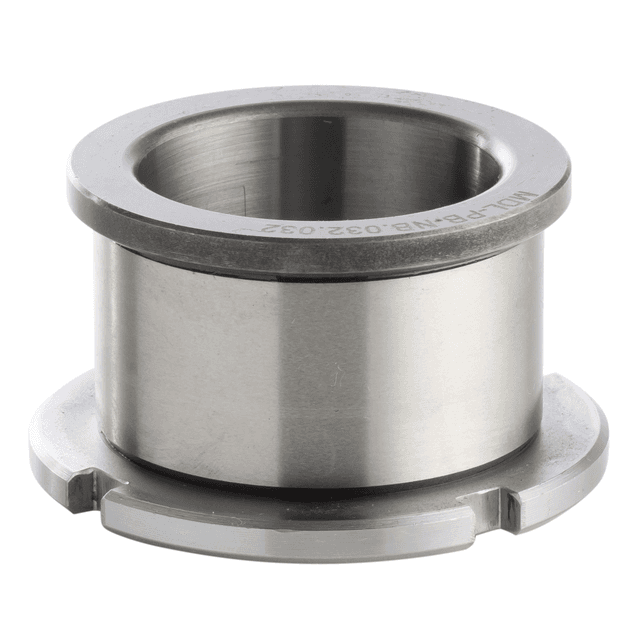
Guide bushes for intermediate plate NB - NF E63-123
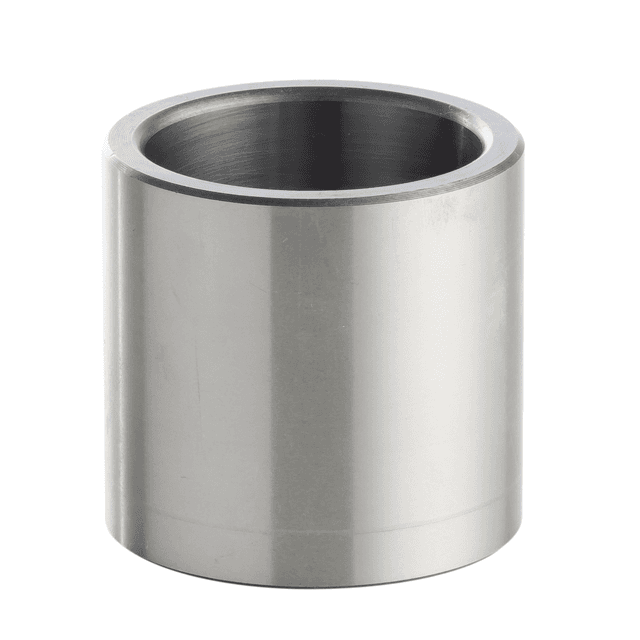
Straight sleeve ball bearing bushes GB - ISO 9448
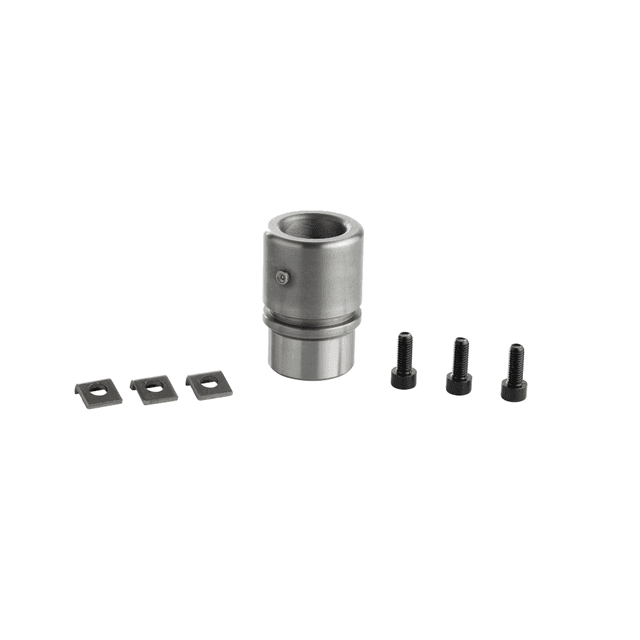
Demountable steel guide bushes ACI - ISO 9448
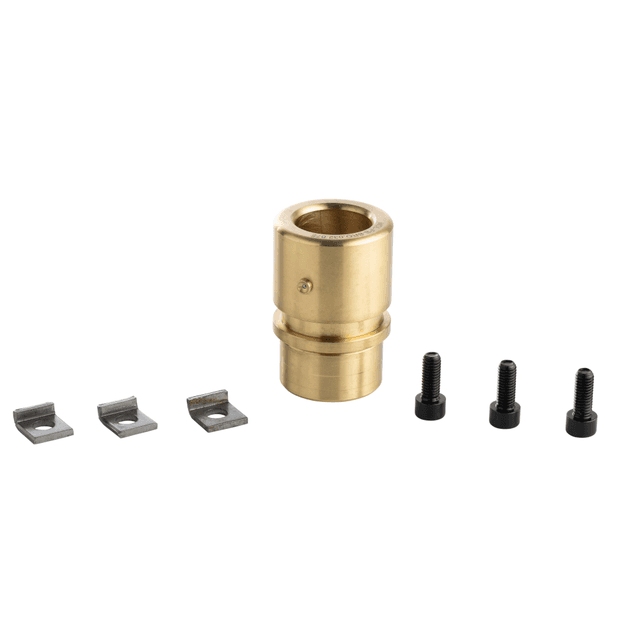
Demountable bronze guide bushes BRO - ISO 9448
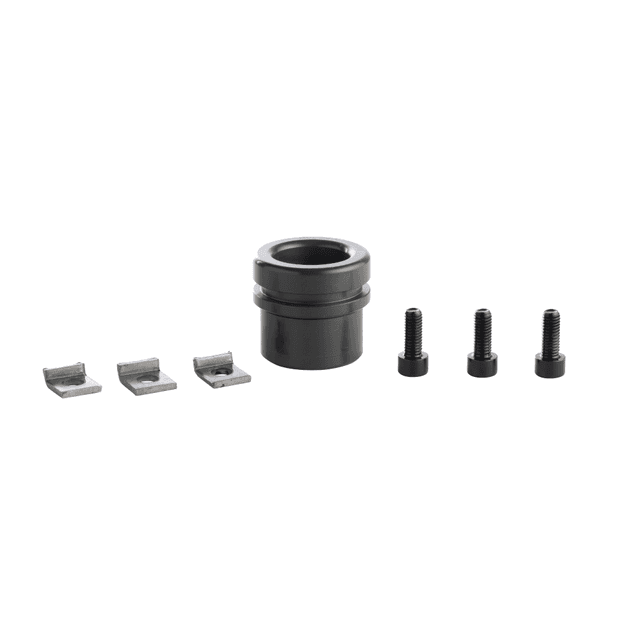
Demoutable aluanodised guide bushes ALU - ISO 9448
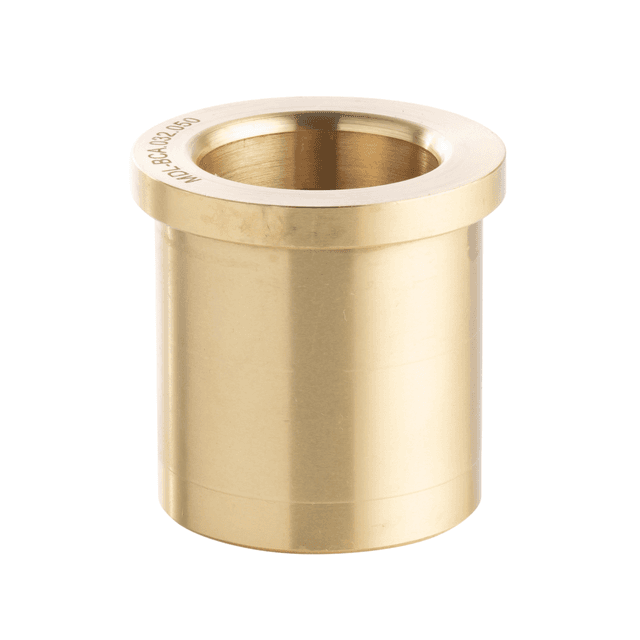
Press-fit bronze guide bushes BCA - NF E63-054
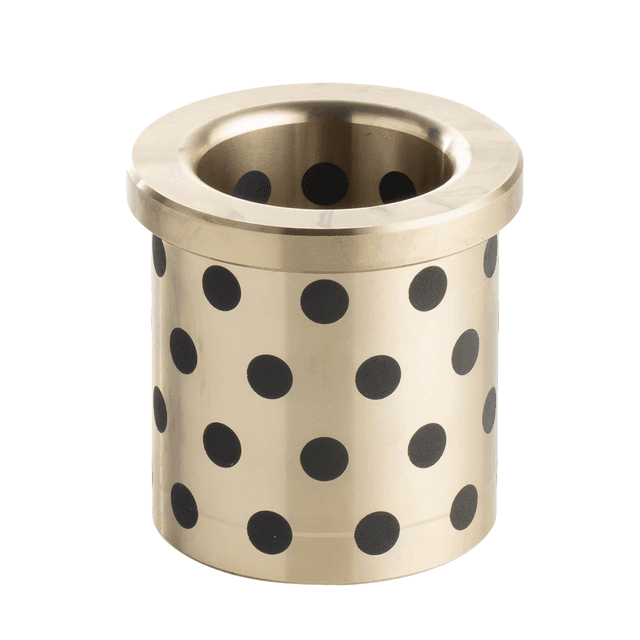
Bronze demountable guide bushes with graphit inserts BBEI
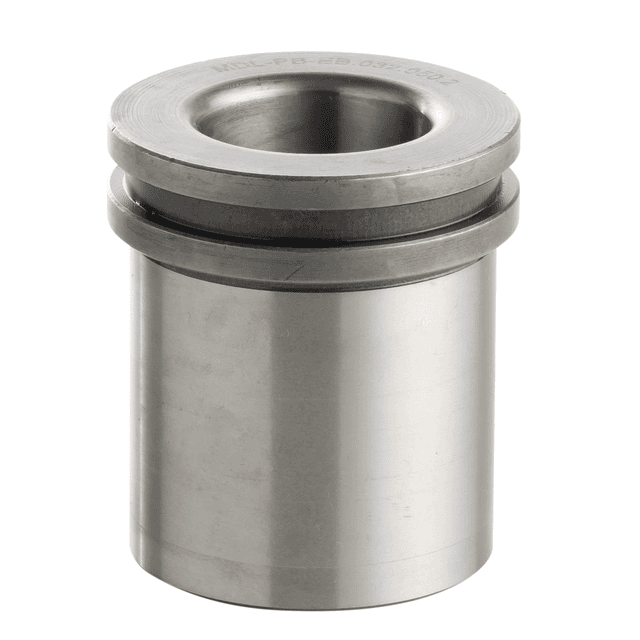
Guide bushes EB for conical column - NF E63-120/121

Demountable steel guide bushes with extra-short shoulder B12 - ISO 9448
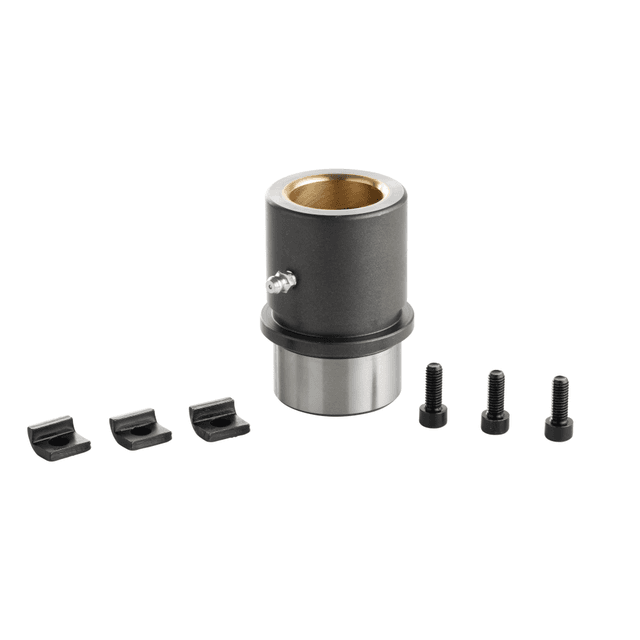
Demountable bronze inserted guide bushes with extra-short shoulder B22I - ISO 9448

Demountable bronze plated guide bushes with extra-short shoulder B22 - ISO 9448
Materials for all applications
Guide bushes can be manufactured from various materials. Each material comes with its own set of advantages and limitations in terms of performance, durability, cost, etc. Here are the types of materials used for guide bushes at AMDL along with their advantages and characteristics:
Steel guide bushes:
Advantages: robust, durable, and capable of withstanding high loads. It offers good wear resistance and is suitable for various conditions.
Disadvantages: Steel may generate more friction compared to other materials.
Bronze guide bushes:
Advantages: Bronze offers good wear resistance and has a lower coefficient of friction, making it suitable for applications with higher speeds.
Disadvantages: The friction coefficient can be relatively high, often requiring increased use of lubricants. The lower hardness of bronze makes it susceptible to dulling and damage in cases of significant impact in the tool due to friction with external elements or excessively high lateral forces.
Bronze-graphite guide bushes:
Advantages: combine the properties of bronze with the benefits of graphite as a solid lubricant. They offer good wear and friction resistance, which can reduce the need for external lubrication. These bushes are suitable for low-speed applications with moderate loads.
Disadvantages: Bronze-graphite bushess may have a slightly reduced load capacity compared to other materials. They are not recommended for high-speed or extreme load applications.
Aluminium guide bushes:
Advantages: Aluminium bushes are light and offer good corrosion resistance. They are often used in applications requiring lightness and low density.
Disadvantages: low mechanical strength compared to other materials, limiting its ability to withstand high loads. It may also have a higher friction coefficient, requiring special attention to lubrication.
Bimetallic guide bushes (Steel Body with Impregnated Bronze on Contact Surface):
Advantages: Bimetal bushes combine two layers of materials, typically an inner layer of steel or bronze and an outer layer of impregnated bronze. This offers the mechanical strength of steel or bronze combined with the lubrication capability of impregnated bronze. These bushes are durable, wear-resistant, and can withstand high loads.
Disadvantages: Bimetallic bushes may be more expensive to manufacture due to their layered construction.
The choice between these materials will depend on the application's specific requirements, including loads, speeds, operating conditions, and required lubrication levels. Selecting the suitable material is crucial to ensure the guide bushes and the entire guiding system optimal performance and lifespan.
Easyfit system for guide bushes
Our guide bushes are equipped with the Easyfit system, allowing for faster mounting. This also prevents too much tightening during installation and ensures a flat support at the collar.
Bushes for ball guiding
In addition to our bushes for plain guiding, we also offer a range of bushes for ball guiding adapted to our ball cages' dimensions to ensure precise and smooth guidance. The combination of bushes, pillar, and ball cage allows fast tool use and reduces friction.
AMDL guide bushes standards
Our guide bushes are categorized into 3 different ranges according to various French, German, European, and international standards:
- MDL PB Range - AFNOR - CNOMO Standard
- MDL Blueline Range - DIN Standard
- MDL Range - ISO Standard
Most guide bushing needs can be met by the extensive in-stock range we offer.
Available diameters and lengths
Standard guide bushes diameters include: 19mm, 20mm, 24 mm, 25 mm, 30 mm, 32 mm, 38mm, 40 mm, 48mm, 50 mm, 63 mm, 80 mm.
Standard guide bushes lengths: 10mm, 14 mm, 16mm, 20mm, 25mm, 29mm, 32mm, 35mm, 36mm, 44mm, 50mm, 65mm, 75mm, 80mm, 95mm, 100mm, 110mm, 120mm, 130mm, 140mm, 150mm, 170mm, 190mm, 215mm, 240mm, 265mm.
We can also provide specific guide elements for special dimensions.
